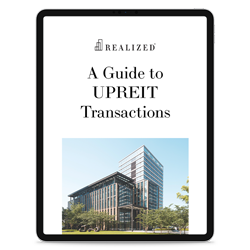Using UPREITs for Retirement Income Planning

As property owners contemplate their transition into retirement, many are evaluating how to convert their physical assets into reliable streams of income that will last throughout their golden years. While real estate has been a cornerstone for many retirement strategies, the complexities of ownership and management often pose challenges for those seeking a more passive investment approach. This is where Umbrella Partnership Real Estate Investment Trusts, or UPREITs, present an intriguing opportunity.
Healthcare UPREITs: Investing in Medical and Senior Housing Facilities

In an economic landscape characterized by an aging population and increasing healthcare demands, investing in healthcare-focused UPREITs (Umbrella Partnership Real Estate Investment Trusts) presents a strategic opportunity for savvy investors. This investment vehicle merges the stability of real estate with the growth potential of the healthcare sector, focusing on medical and senior housing facilities.
Navigating Inflation and Economic Uncertainty With UPREIT Investments

The economy is never stable, and realities like inflation and market volatility present constant uncertainty to investors. As such, addressing these risks becomes a key process for portfolio management.
Technology and Innovation in UPREIT Property Management

It’s absolutely essential to manage the underlying properties of an umbrella partnership real estate investment trust (UPREIT) to ensure continuous operations and income. This is why real estate investment trusts (REITs) employ several types of property management technology to address daily operations, such as tenant relationships and maintenance.
The Impact of Market Volatility on UPREIT Performance

Market volatility is an unavoidable aspect of investing. Even diversified portfolios, like those owned by an umbrella partnership real estate investment trust (UPREIT), can still feel the effects of these fluctuations.
The Role of Limited Partners in an UPREIT Structure

Investing in an umbrella partnership real estate investment trust (UPREIT) provides various benefits to investors, like tax deferral and enhanced diversification. Before you enter one, however, it’s crucial to understand the UPREIT’s structure and how exactly it applies to you. This way, you’ll have a grasp of your role as a limited partner and can set your expectations. Below, Realized 1031 shares key insights discussing the role of limited partners in an UPREIT structure.






